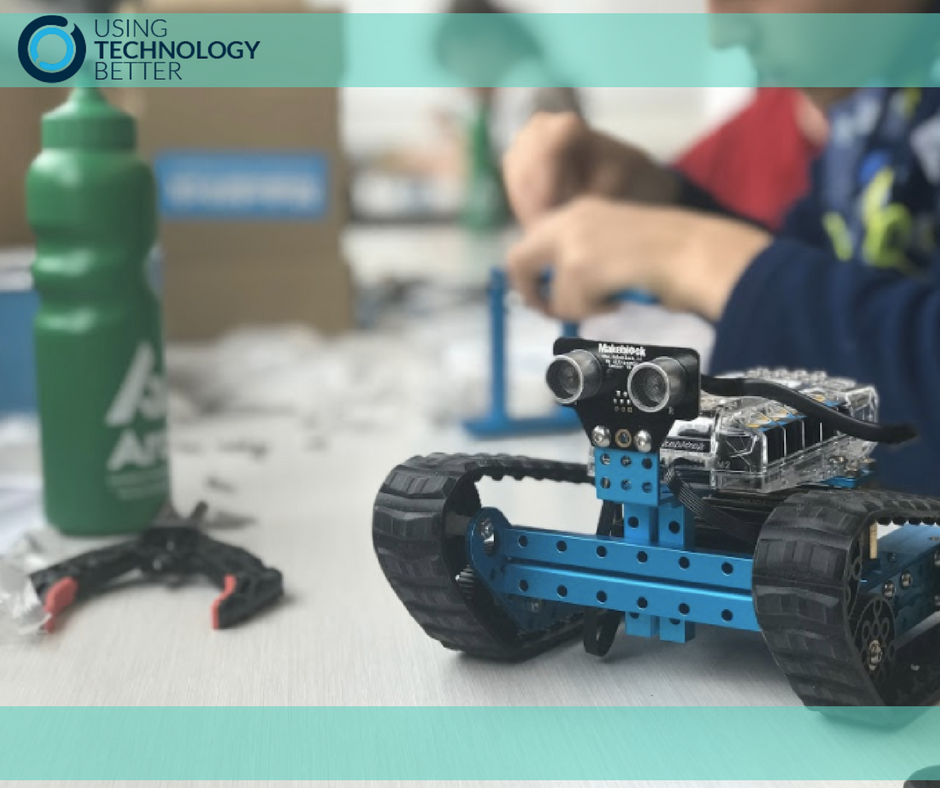When I was starting one of our STEAM workshops a few months back, I asked the teachers for any specific questions they had before we started. I always try to be honest when I don’t know the answer, and say “I actually don’t know about that one.” One of the teachers asked a question which received that answer. They asked “What does the E in STEAM actually look like in practice?”
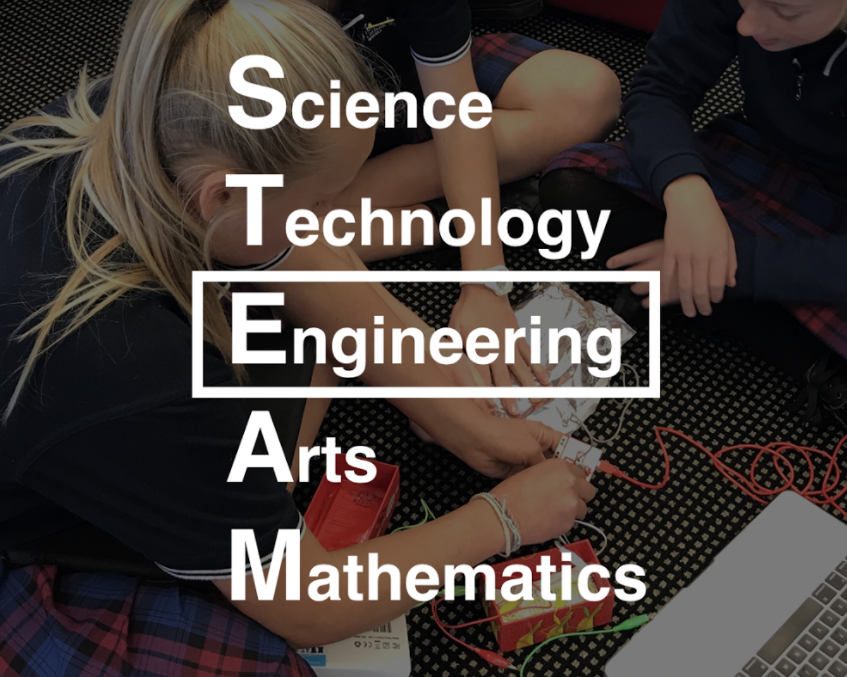
[bctt tweet=”Ever wonder what the ‘E’ in STEM and STEAM actually means for your students? ” username=”markherringnz”]
Last week I had the opportunity to work with a team of lecturers at a regional polytechnic to facilitate a holiday program on coding and robotics. One of the lecturers was described as an engineer. Learning as much as I could from him became my new hidden agenda!
So how do we separate the key areas of science and technology from engineering? Here are some my key takeaways from my conversations with the engineer.
[bctt tweet=”Do you know how to plan for the engineering concepts when engaging students in STEAM learning? Here are some ideas. ” username=”markherringnz”]
First, you can look at engineering as the intersection between science and technology. Science can be described as what we understand about the world around us, and technology as the human response to a ‘need or a want.’
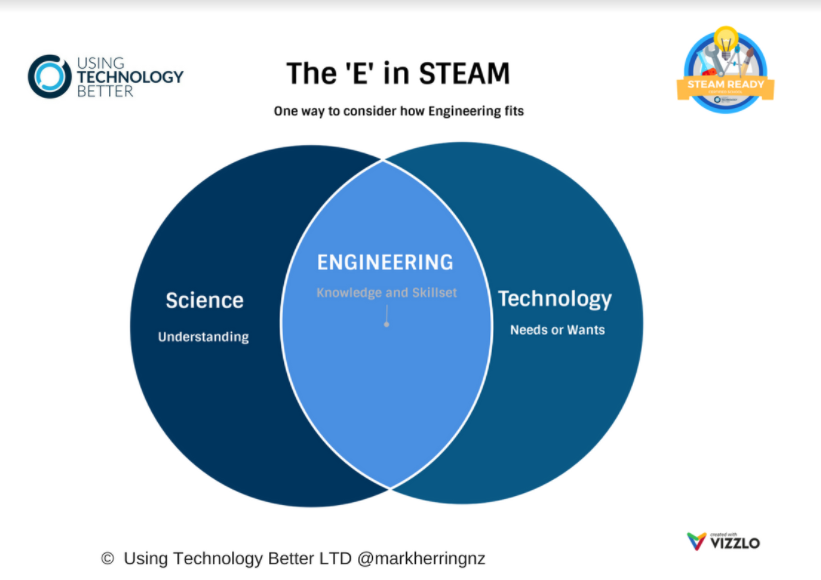
Technology is either the products or systems that solve a problem and can also involve ideas such as ‘rules of thumb’ or experience that comes over time. To understand engineering then, is to use what we know from both fields and combine them in disciplines such as mechanics or electrics (more on this below). To be an engineer is to have the knowledge and skillset to combine the areas of science and technology in ways that are productive and meaningful.
An example of this is the design of a suspension bridge. To construct a successful bridge, an engineer needs the math and physics knowledge (science) to understand the loads and tensions placed on each part of the structure. They then need to be able to combine this knowledge with an understanding of the bracings, nuts and bolts, and commonly used techniques and tools (technology) to cater for these loads. The combination of these two disciplines form the engineering capability that the bridge design needs.

We also discussed the difference between ‘theoretical’ and ‘trade’ engineering. It’s easy, apparently, for there to be confusion between the two. In one sense, being an ‘engineer’ is someone who deals mainly in hands-on tasks and processes. While a ‘theoretical’ engineer is someone skilled with the conceptual understandings and theories of what makes effective design. Engineers can also be skilled somewhere in the middle of these two extremes.
Lastly, engineering can be seen in terms of four key disciplines. This graphic below shows these four disciplines, which are:
- Chemical
- Civil
- Electrical
- Mechanical
Students can build expertise in any of these areas after starting with a grounding in the basic skills and understandings that come from STEAM learning opportunities.
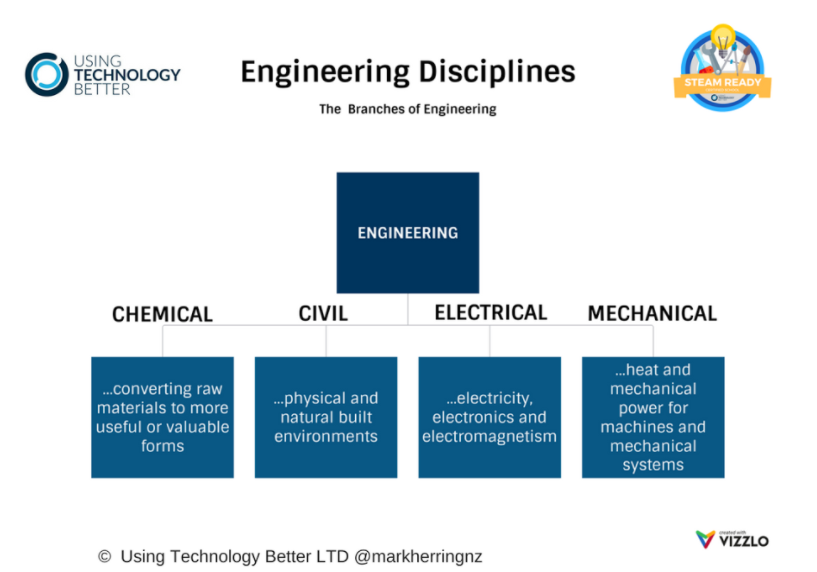
So, how can we help students see and reflect on the engineering skills they may be developing in a STEAM project? One way could be to construct a Venn Diagram of the 4 disciplines and have them reflect and record the skills and knowledge they construct or discover as they go. It could look like the example below.
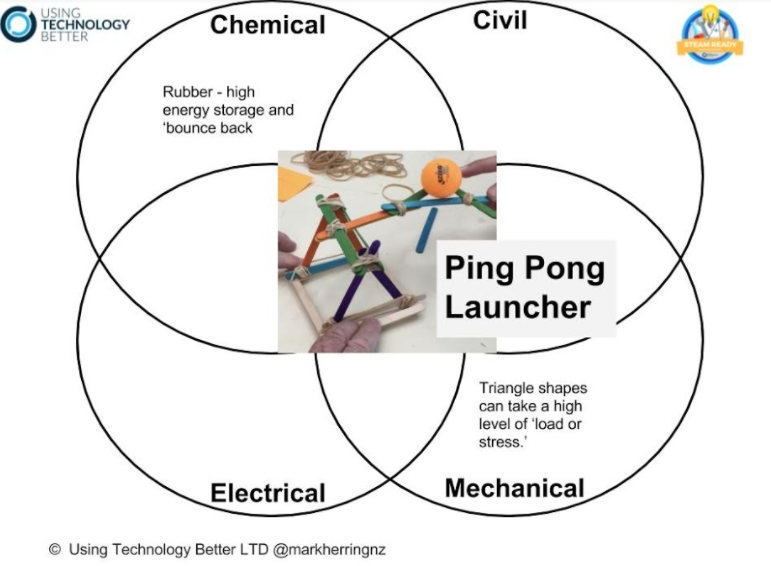
In this example, students have used their physics understanding of energy transfer and trajectory for science for a challenge to design and create a Ping Pong Launcher. The technology skill using the ‘bounce and stretch factor’ of the rubber bands, understood as part of ‘chemical engineering’, has been combined with the power of the triangle as a strong structural shape for loading (mechanical engineering). The intersection of the two disciplines is the product of the process; this could be described as their ‘engineering reflection.’ Students could upload photos and video into this area that demonstrates these ideas. If you’d like a copy of our STEAM Engineering Reflection Template, click here.. (This Google Drawing file requires a Google account to access. Click here for a PDF version.)
We often show teachers in our workshops how it can be important for them to plan the engineering skills that students could need for any STEAM project. For the challenge that involves a Makey Makey below ( creating an electronic instrument), students would need the ‘electrical’ engineering skills of a basic circuit – what would make a circuit breaker or switch and how to use the practical tools such as a wire stripper. When a teacher is planning this lesson they could simply include this information and make sure the students have the equipment and resources needed to succeed.
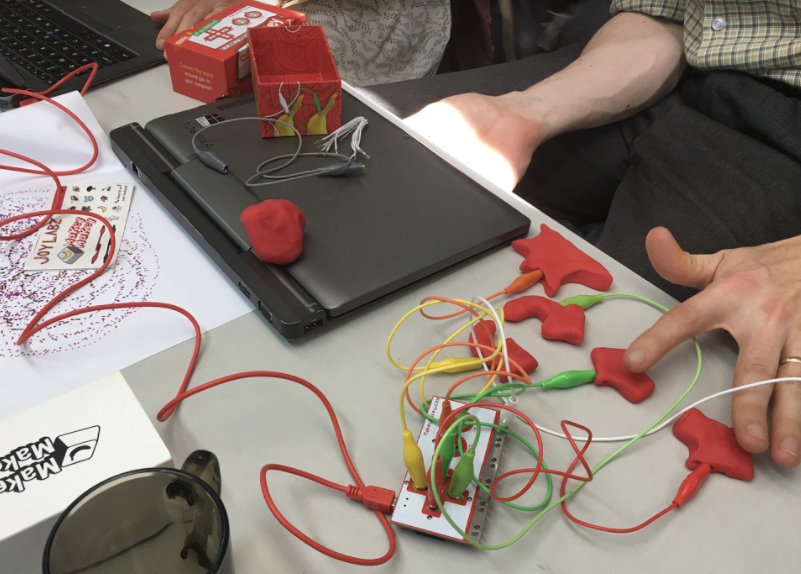
So those are some things to consider when teachers are attempting to make explicit the engineering discipline in our STEAM activities. If you’d like to go deeper into some of our other learning frameworks that make STEAM projects practical and achievable for all teachers in your school, contact us for information about the nearest upcoming STEAM #1 or #2 workshops. Or better yet, ask for more information here about our STEAM Ready Program and really get your school up to speed for some STEAM action.



